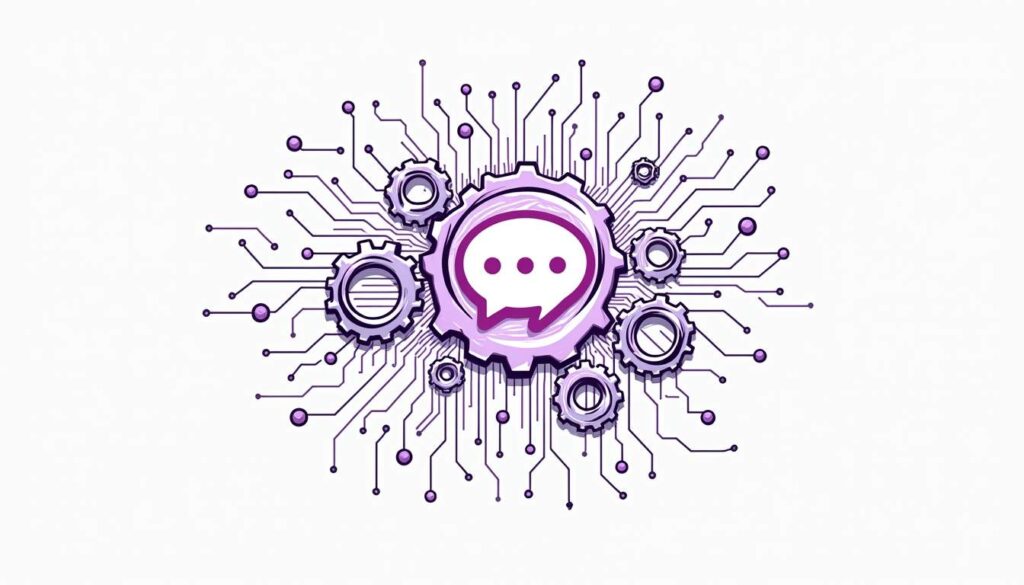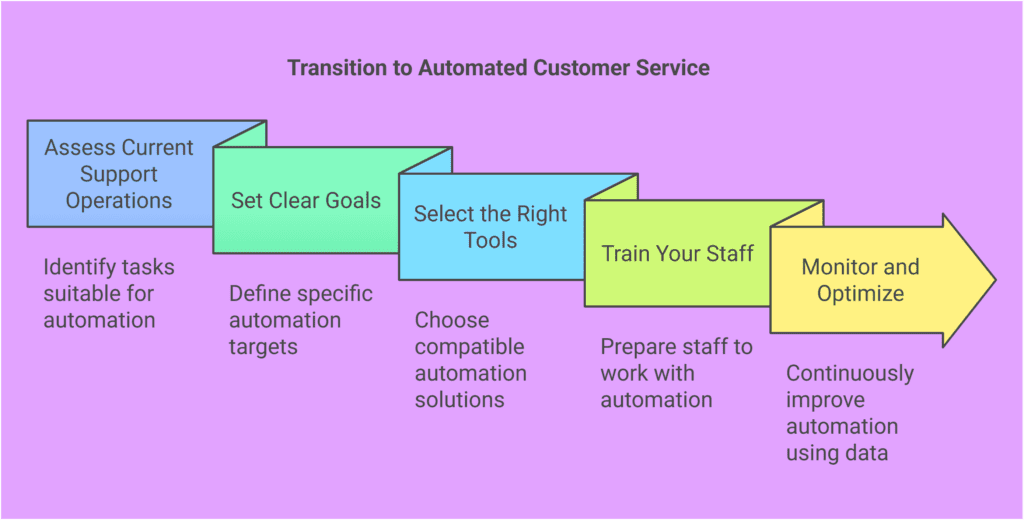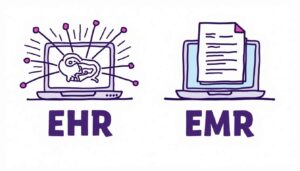Automating Customer Support: 24/7 Availability Without the Overhead
18 Feb 2025 By: Maria Rush
Updated
There’s nothing more frustrating for customers than waiting hours sometimes days, for a response. We live in a world where people expect immediate solutions, and if they don’t get them, they move on to the next option. Businesses that understand this are turning to automated customer service to stay ahead. But what exactly does that mean? And is it the right move for your business?

Understanding the Need for Automation in Customer Support
As businesses grow and customer demands shift, traditional customer support systems often struggle to keep up with the evolving customer journey. The automation of customer support is not just a trend. It is a proven strategy that addresses key challenges faced by support teams.
The Evolution of Customer Support
Historically, customer support was primarily human-driven, with representatives fielding calls and emails during specific hours. However, with the rise of the internet and the globalization of markets, customer expectations have evolved dramatically. Today’s consumers want assistance at any hour and prefer instant responses. Leading to the need for innovative solutions.
Chatbots, AI, and machine learning have transformed how companies interact with their customers. This allows for a more seamless and efficient experience. These technologies provide immediate answers to frequently asked questions and learn from interactions. Improving their responses over time.
The Demand for 24/7 Availability
Customers expect support outside of conventional business hours. Whether they are in different time zones or simply busy during the day. Being available 24/7 can significantly enhance customer satisfaction and loyalty.
Automated customer support systems can ensure that customers receive assistance no matter when they reach out. Thus eliminating the frustration and reducing waiting time. This immediacy fosters a positive customer experience, ultimately leading to stronger brand loyalty. Furthermore, 61% of respondents identify 24/7 service as the primary benefit of chatbots.
The Challenge of Overhead Costs
Operating a customer support team around the clock can quickly become expensive. Staffing a support center 24/7 incurs significant costs in wages, training, and benefits. Additionally, high turnover rates in support staff can exacerbate these customer service tasks. Resulting in further inefficiencies.
Automation presents a pragmatic solution that enhances availability. It also reduces the overhead associated with traditional support methods. AI can decrease customer service expenses by up to 30%.
Trending Now
AI-driven automation is changing customer support. Retailers can now handle peak-season surges without losing service quality. Instead of overwhelming staff, AI takes care of routine tasks. It manages order updates, inventory checks, and common customer questions. This means fewer mistakes, faster responses, and happier customers.
Predictive analytics helps smaller teams focus on what matters. Even new support agents can provide accurate answers with real-time AI guidance. Shoppers expect more transparency, especially with returns and deliveries. Automation keeps them updated before they even have to ask.
The right mix of AI and human support improves customer service. To ensure these AI-driven processes run smoothly, businesses rely on an AI based test automation tool to identify potential issues before they impact customer interactions. This proactive approach keeps businesses competitive and adaptable in a fast-changing market.
How Customer Support Automation Works

Different businesses have different needs, which is why customer service automation platforms come in various forms. Here are some key components of customer care automation:
Chatbots and AI Assistants
Chatbots are one of the most common customer support automation software solutions. They can answer FAQs, guide customers through troubleshooting, and even handle transactions. AI-driven automation has reduced call center wait times by 40%.
Automated Email and SMS Responses
Customer service automated responses ensure no customer issue goes unanswered. Companies integrating AI with human agents handle 7.7% more simultaneous chats, leading to an average staffing cost savings of $4.3 million.
Self-Service Knowledge Bases
A well-structured FAQ or help center is an underrated yet powerful form of automation in customer service. Customers can find answers themselves, reducing the workload on human agents.
IVR (Interactive Voice Response) Systems
IVR is a classic automated customer service system that helps route calls to the right department. It can also provide information without human intervention.
CRM and AI Integration
For businesses that use automated customer service software. Integrating AI with customer relationship management (CRM) tools can provide real-time insights and personalized experiences.
Real-World Automated Customer Service Examples
Still not convinced? Here are some customer service automation examples that show how businesses are using technology to enhance support:
- E-commerce: Amazon’s chatbots handle order tracking and returns.
- Banking: Many banks use AI-driven assistants to help customers check balances, transfer funds, and even dispute transactions.
- Healthcare: Clinics and hospitals leverage automation for appointment scheduling, prescription refills, and handling basic customer inquiries. More than 60% of consumers expect 24/7 service availability.
- Hospitality: Hotels implement AI-powered concierge services that handle guest inquiries, room service requests, and check-in/check-out processes.
Implementing Automation in Your Customer Support

Steps to Transition to Automated Customer Service
- Assess Current Support Operations – Identify high-volume or repetitive tasks where automation can have a significant impact.
- Set Clear Goals – Define specific targets. Whether it’s reducing response times, lessening the burden on staff, or improving customer satisfaction.
- Select the Right Tools – Ensure the automation solutions integrate with your existing systems and align with your business needs.
- Train Your Staff – Human agents should be well-versed in working alongside automation to provide seamless customer experiences.
- Monitor and Optimize – Use data-driven insights to continuously refine automated responses and customer interactions.
Measuring the Success of Your Automated Support
Key Performance Indicators for Automated Customer Service
- First Response Time – Measures how quickly a customer receives their first answer.
- Resolution Rate – The percentage of queries resolved without human intervention.
- Customer Satisfaction Scores – Insights gained from surveys provide valuable reflections on customer experiences with automation. A cloud-based customer experience platform can enhance this process by seamlessly collecting, analyzing, and interpreting feedback in real time. These insights help businesses refine their automation strategies, ensuring a more personalized and efficient customer journey.
- Cost Savings – Quantifying the reduction in operational costs due to automation.
Conclusion
Customers want fast, efficient, and 24/7 support. The best way to deliver that without increasing overhead costs? Automated customer service. It’s not about replacing human agents, it’s about empowering them. By automating repetitive tasks, businesses can free up their teams to focus on complex, high-value customer interactions. And that’s how you win in today’s competitive market.
“When deploying AI, whether you focus on top-line growth or bottom-line profitability, start with the customer and work backward.”
— Rob Garf, Vice President and General Manager, Salesforce Retail
Ready to transform your customer support with the power of automation? Look no further than HelpSquad BPO. Our dedicated virtual assistants and 24/7 customer service team are here to elevate your business operations, offering bilingual support and a range of outsourcing services at an unbeatable starting rate of just $8.50 per hour. Don’t miss the opportunity to enhance your customer satisfaction and streamline your support system. Start your trial today and experience the efficiency that HelpSquad BPO can bring to your company.


